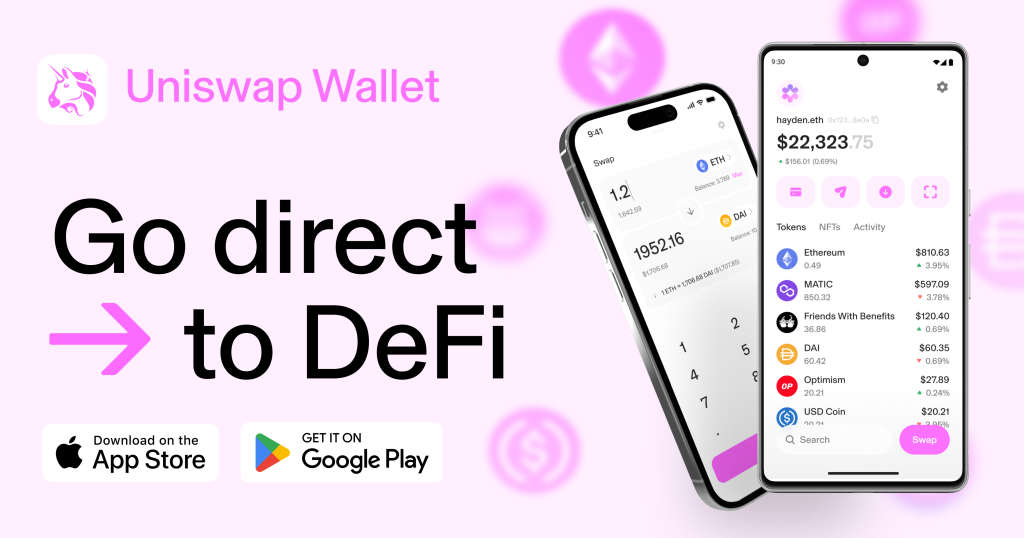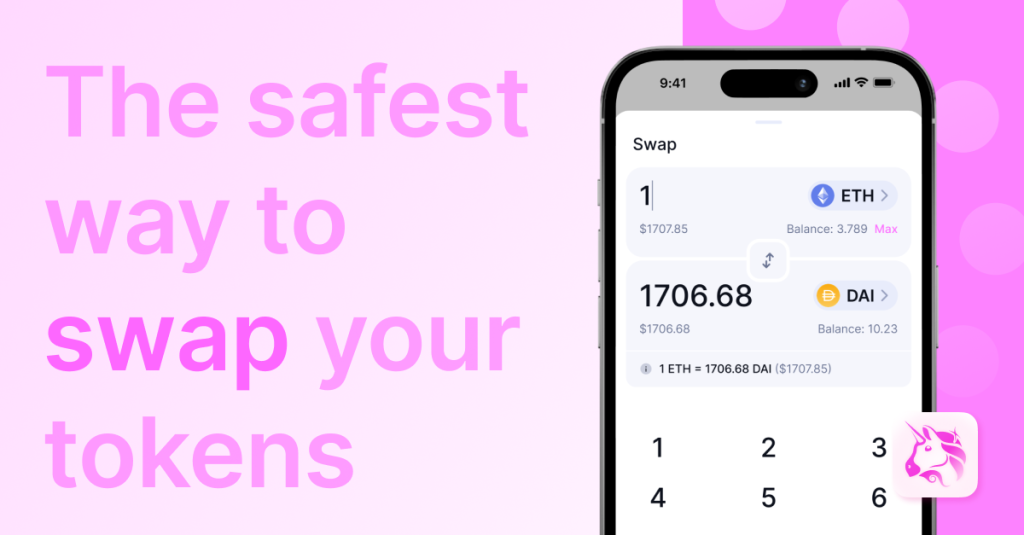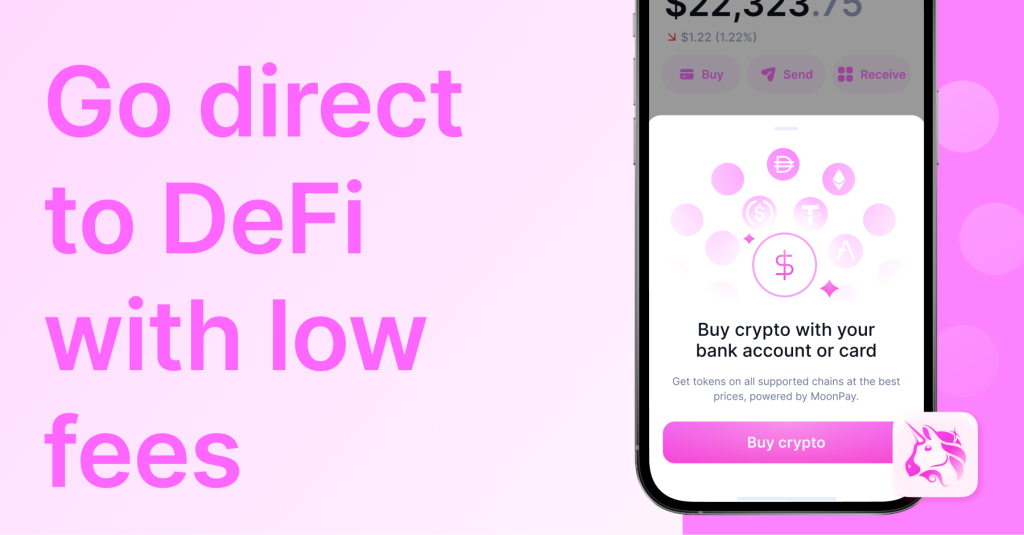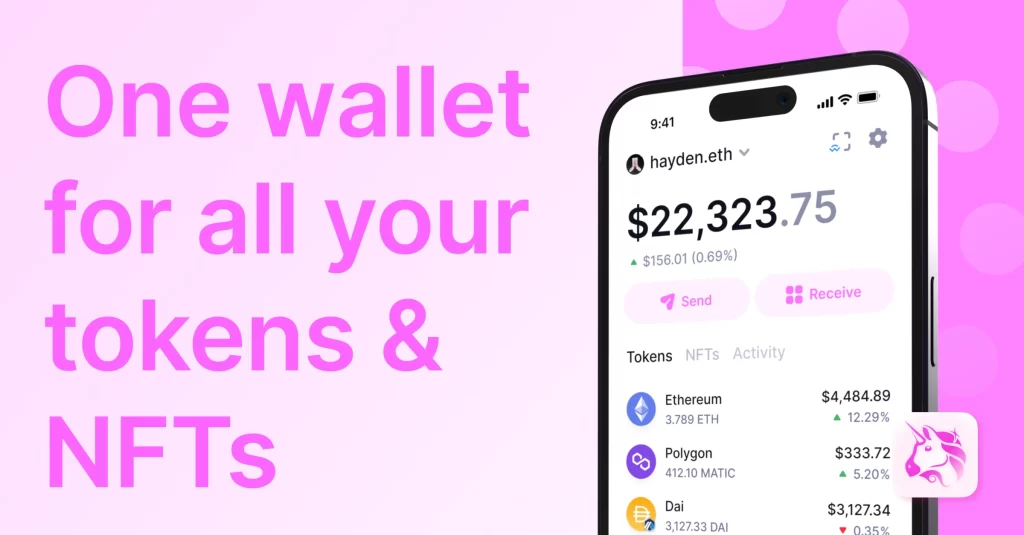
No, Uniswap charges a 0.3% trading fee and requires gas fees for transactions.
Understanding Uniswap Fees
Trading Fees
Uniswap charges a 0.3% fee for each trade. This fee is automatically deducted from the transaction and distributed to liquidity providers based on their share of the pool. The consistent fee structure incentivizes users to provide liquidity.
Gas Fees
In addition to trading fees, users pay gas fees to process transactions on the Ethereum network or other supported networks.
- Ethereum Gas Fees: These fees vary with network congestion, measured in gwei. Higher network demand leads to higher gas prices.
- Optimizing Gas Costs: Transact during off-peak times or adjust gas price settings for cost savings, but be aware lower prices may slow transaction confirmation.
- Layer 2 Solutions: Networks like Optimism and Arbitrum offer lower fees and faster transactions by processing off the main Ethereum chain, reducing overall gas costs.

Comparing Uniswap with Centralized Exchanges
Fee Structures
- Uniswap Fees: Charges a flat 0.3% fee per trade, plus variable gas fees based on network congestion.
- Centralized Exchange Fees: Typically charge 0.1% to 0.5% per trade, with possible discounts for high-volume traders. May also have hidden fees.
Additional Costs
- Uniswap Gas Fees: Significant during high network activity, but reduced on Layer 2 solutions like Optimism and Arbitrum.
- Centralized Exchange Fees: Include deposit and withdrawal fees, which vary by payment method and cryptocurrency.
- Spread Costs: Centralized exchanges have spreads between buy and sell prices. Uniswap may experience slippage during large trades.
- Security Risks: Centralized exchanges hold user funds, posing a security risk if hacked. Uniswap allows users to control their own funds, reducing this risk.
How Liquidity Providers Earn
Earning Mechanisms
Liquidity providers (LPs) on Uniswap earn money by supplying tokens to liquidity pools. They deposit an equal value of two tokens into a pool, facilitating trades on the platform.
- Trading Fees: LPs earn a share of the 0.3% trading fees proportionate to their contribution to the liquidity pool.
- Yield Farming: In some cases, Uniswap incentivizes liquidity provision with additional token rewards, known as yield farming or liquidity mining.
Fee Distribution
The fees collected from trades are distributed among liquidity providers based on their share of the pool.
- Proportional Earnings: Fees are automatically distributed to LPs proportionally to the amount of liquidity they have provided.
- Automatic Reinvestment: Fees earned are often automatically added to the pool, compounding the LP’s earnings over time.
- Withdrawal: LPs can withdraw their tokens and earned fees at any time, but doing so might incur gas fees and potential price slippage depending on market conditions.

Hidden Costs and Considerations
Slippage
Slippage occurs when the actual price of a trade differs from the expected price due to market movement during the transaction.
- Definition: Slippage happens when there is a discrepancy between the expected price of a trade and the price at which the trade is executed.
- Causes: High volatility and low liquidity in a trading pair can cause significant slippage. Large trades are more susceptible to slippage as they can impact the market price.
- Minimizing Slippage: To reduce slippage, traders can:
- Set a slippage tolerance limit in Uniswap.
- Trade smaller amounts to avoid large market impacts.
- Execute trades during periods of lower market volatility.
Price Impact
Price impact refers to the effect a trade has on the market price of a token due to the liquidity available in the pool.
- Definition: Price impact measures how much a trade changes the price of the tokens in the liquidity pool.
- Factors: The size of the trade relative to the pool’s liquidity determines the price impact. Larger trades in smaller pools result in higher price impacts.
- Considerations: High price impact can make trades more expensive and less favorable.
- Check the estimated price impact before confirming a trade.
- Use pools with higher liquidity to reduce price impact.

Tips for Minimizing Costs
Optimal Trading Times
Trading at the right times can help reduce costs associated with both trading fees and gas fees.
- Lower Network Congestion: Trade during off-peak hours when the Ethereum network is less congested. This typically results in lower gas fees.
- Weekends and Late Nights: These periods often see reduced network activity, leading to lower fees.
- Monitoring Tools: Use tools like Etherscan Gas Tracker to monitor network activity and find optimal times for trading.
- Avoid High-Volatility Periods: During times of high market volatility, gas fees can spike due to increased demand. Trading during calmer market periods can reduce costs.
Reducing Gas Fees
Gas fees can be a significant expense on the Ethereum network. Here are strategies to minimize these fees:
- Layer 2 Solutions: Use Layer 2 solutions like Optimism and Arbitrum, which offer lower gas fees and faster transaction times compared to the main Ethereum network.
- Bridge Assets: Transfer assets to Layer 2 networks to take advantage of reduced fees.
- Set Gas Limits: Adjust the gas limit to a reasonable level based on the current network conditions. Tools like ETH Gas Station can help determine optimal gas limits.
- Batch Transactions: Whenever possible, batch multiple smaller transactions into one larger transaction to reduce the overall gas fees.
- Use Gas Tokens: In some cases, using gas tokens can help lower the cost of gas fees. These tokens can be used to pay for gas at reduced rates.

Uniswap on Different Networks
Ethereum Network Costs
Using Uniswap on the Ethereum network involves various costs, primarily due to the gas fees required for transactions.
- Gas Fees: Gas fees on Ethereum can vary widely depending on network congestion. During peak times, fees can become quite high, making transactions expensive.
- Calculation: Gas fees are calculated in gwei (a subunit of Ether). The total cost depends on the gas price (gwei per unit of gas) and the amount of gas required for the transaction.
- Strategies to Reduce Fees: Users can save on gas fees by trading during off-peak hours, using gas fee trackers like Etherscan Gas Tracker to find optimal times for transactions.
- Transaction Costs: Every trade on Uniswap requires a gas fee, which can make frequent trading costly. Users must also pay a 0.3% trading fee per transaction.
- High-Frequency Trading: High-frequency traders on Ethereum need to consider these costs as they can quickly add up, impacting overall profitability.
Costs on Layer 2 Solutions
Layer 2 solutions like Optimism and Arbitrum are designed to reduce transaction costs and improve scalability for Uniswap users.
- Lower Gas Fees: Layer 2 networks significantly reduce gas fees compared to the main Ethereum network.
- Optimism: Transactions on Optimism incur lower gas fees by processing transactions off-chain and then settling them on Ethereum.
- Arbitrum: Similar to Optimism, Arbitrum reduces gas fees by using off-chain processing with periodic settlements on the Ethereum mainnet.
- Fast Transactions: Layer 2 solutions offer faster transaction times, which improves the user experience and reduces the waiting time for transaction confirmations.
- Scalability: These networks can handle a higher volume of transactions simultaneously, leading to lower fees and quicker processing times.
- Bridge Fees: Transferring assets between Ethereum and Layer 2 networks might incur bridge fees, but these are usually offset by the savings on gas fees for transactions.

Future Developments and Fee Reductions
Upcoming Features
Uniswap continuously evolves to improve user experience and reduce costs. Several upcoming features aim to enhance the platform’s functionality and efficiency.
- Layer 2 Integrations: Expanding integration with Layer 2 solutions like Optimism and Arbitrum to further reduce gas fees and increase transaction speeds.
- Enhanced Scalability: These integrations will allow Uniswap to handle more transactions simultaneously, reducing congestion and costs.
- Cross-Chain Functionality: Development of cross-chain bridges to facilitate seamless trading across different blockchain networks.
- Broader Access: Enabling users to trade assets across multiple chains without leaving the Uniswap platform.
- Improved User Interface: Enhancements to the Uniswap interface to provide better analytics, easier navigation, and more intuitive trading tools.
- User Experience: Streamlined processes and clearer information to help users make informed trading decisions.
Potential Fee Changes
As Uniswap grows and integrates new technologies, potential fee changes could further reduce the costs for users.
- Lower Trading Fees: Potential adjustments to the standard 0.3% trading fee to make the platform more competitive and attractive to high-volume traders.
- Fee Tiers: Introducing tiered fee structures based on trading volume or liquidity provision could incentivize more participation.
- Gas Fee Optimizations: Continued efforts to optimize gas usage on the Ethereum network and Layer 2 solutions.
- Efficient Transactions: Implementing more efficient smart contract operations to reduce the gas required per transaction.
- Incentive Programs: Introducing or expanding liquidity mining programs to reward users with reduced fees or additional tokens for providing liquidity.
- User Rewards: Enhanced incentive structures to encourage more liquidity provision, thereby improving market depth and reducing slippage.